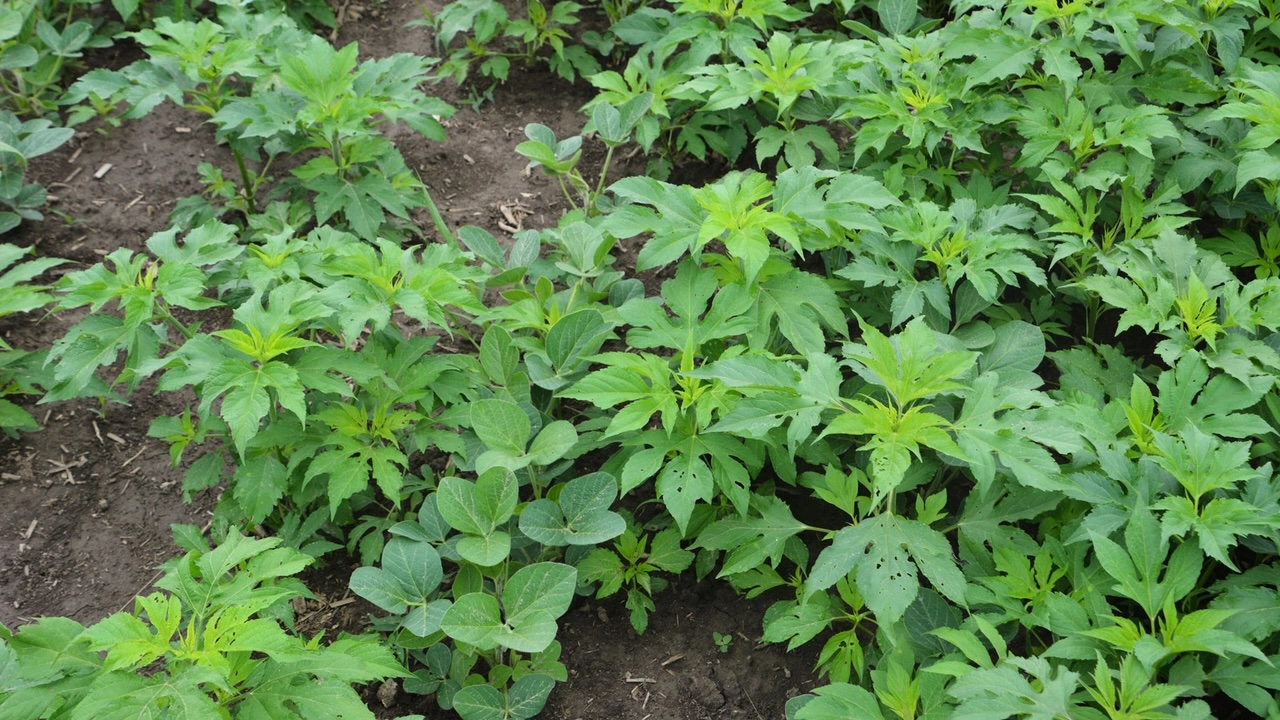Lay foundation for giant ragweed control

Answers are from the Indiana certified crop adviser panel: Betsy Bower, Keystone Cooperative, Lafayette; Jeff Nagel, Keystone Cooperative, Lafayette; and Marty Park, Gutwein Seed Service, Rensselaer.
I am tired of giant ragweed popping up in soybeans, and I likely won’t have dicamba to work on it in crop in dicamba-tolerant soybeans. How can I get rid of giant ragweed once and for all?
Bower: You will never totally get rid of giant ragweed. But you can manage giant ragweed and other problematic weeds by using effective weed control. This includes crop protection products with multiple modes of action against giant ragweed, along with overlapping residual programs to provide longer residual control.
Start with a fall burndown to control winter annuals when you can. The fall burndown can allow the soil to warm up and dry faster for a more ideal spring no-till seedbed than weedy fields.
Follow with a weed control pass as close to planting as you can. Include at least two active ingredients or two modes of action against giant ragweed. About three weeks after planting, apply a pass that not only includes product to terminate any emerging weeds but also another layer of residual.
Because giant ragweed emerges early, the postemergence application can be geared toward summer-emerging weeds like waterhemp. But in some fields, you may want to have another layer of a safe residual for giant ragweed.
Nagel: Giant ragweed was a key weed that helped drive the rapid adoption of glyphosate-tolerant soybeans in the mid-’90s. Unfortunately, variable levels of resistance developed over time, making glyphosate relatively ineffective. It is a challenging weed because it germinates from deeper in the soil and can have multiple germination and flushes with rainfall events. On the positive side, length of time for weed seed viability is less than many other weeds. If you can keep them from going to seed, you can get a significant reduction in the weed seed bank in three to five years.
Start with effective tillage or appropriate burndown to control any emerged seedlings. Use a soi-applied residual herbicide with activity on giant ragweed. A premix that contains chlorimuron or chloransulam are lead options. Most giant ragweed is resistant to these Group 2 herbicides, but higher soil-applied rates can provide some suppression.
With E3 soybeans, include Enlist One in the post application. It is very effective on giant ragweed. For XtendFlex soybeans, it’s likely we won’t have Engenia, XtendiMax or Tavium registered to apply post in 2025. So, use a higher rate of glufosinate on smaller giant ragweed plants. It is important to apply 20 gallons per acre with a medium to coarse droplet size.
For non-GMO or Plenish soybeans, good luck! The only postemergence options are the Group 14 herbicides like Cobra and Flexstar. Some populations are suspected to have some level of PPO resistance. Spray post on giant ragweed plants less than 4 inches tall. Good spray coverage principles are the same as for Liberty.
Park: There is not a total cure for giant ragweed. Continue to manage this weed by laying down a strong foundation herbicide program and following up with a strong timely postemergence program, and then another timely postemergence program as needed. Glyphosate, glufosinate and Enlist would be your best postemergence herbicide options in soybeans. Match these to herbicide-tolerant varieties in your lineup.

